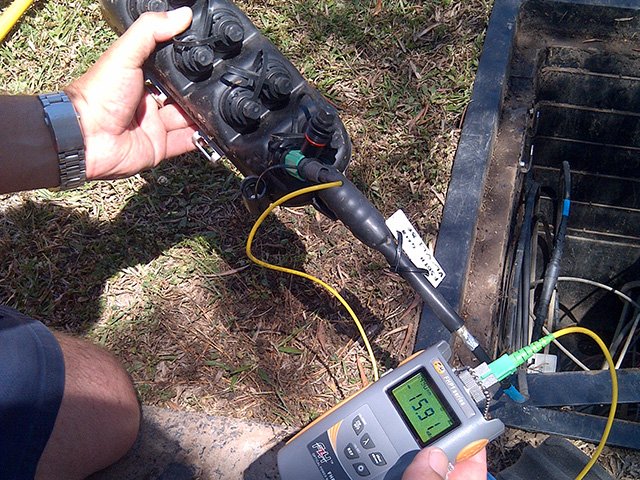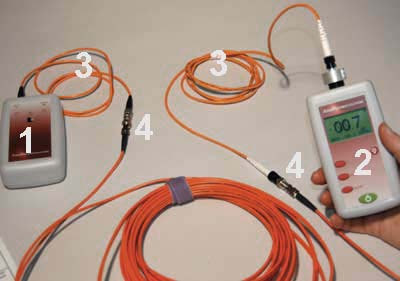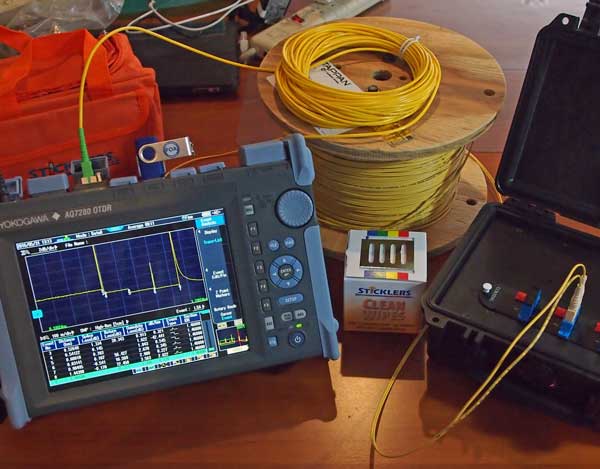The latest optical fibre testing equipment enhances troubleshooting and diagnostics in telecommunications.
Discover the Significance of Optical Fibre Screening in Modern Telecom
In the world of contemporary telecommunications, the importance of optical fiber testing can not be overstated, as it serves as the backbone for making sure network reliability and performance. What are the particular advantages that routine screening offers, and just how might it form the future landscape of telecommunications?

Understanding Optical Fibre Testing
Optical fiber screening is a crucial procedure in telecoms that guarantees the stability and performance of fiber optic networks. This testing encompasses a variety of procedures created to examine the physical and practical features of optical fibres - fibre testing equipment. Secret specifications analyzed include optical power loss, data transfer capability, and fault area, which are important for preserving high-quality communication links
The testing process usually includes using customized tools such as Optical Time-Domain Reflectometers (OTDR) and Optical Power Meters. OTDRs are utilized to recognize and identify faults, entwines, and adapters within the fibre, while power meters measure the transmitted light signal stamina to identify efficiency.
Moreover, screening is conducted at numerous phases, consisting of throughout installation, maintenance, and troubleshooting, to guarantee that the network satisfies market criteria and functional demands. Conformity with criteria set by companies like the International Telecommunication Union (ITU) and the Telecoms Sector Organization (TIA) is critical.
Advantages of Routine Checking
Regular screening of optical fibres returns many benefits that considerably improve network integrity and performance. One of the main advantages is the early detection of possible problems, such as breaks or degradation in the fibre, which can result in costly downtime if left unaddressed (robotic vision). By recognizing these problems proactively, telecommunications service providers can minimize solution disturbances and ensure regular connectivity for their consumers
Additionally, regular screening helps to preserve the stability of signal quality. As optical fibers age, their performance can be affected by factors such as environmental problems and physical anxiety. Regular analyses permit the tracking of signal loss and general transmission efficacy, making sure that the network operates at optimal levels.
Another significant advantage is conformity with market requirements. Regular screening sustains adherence to regulatory requirements, consequently reducing legal and financial risks linked with non-compliance. Additionally, it enhances the overall life-span of the fibre infrastructure by helping with timely repair and maintenance.

Usual Evaluating Techniques
Testing optical fibers uses different techniques to make certain the integrity and performance of telecoms networks. Amongst one of the most typical methods is Optical Time Domain Name Reflectometry (OTDR), which assesses the whole length of the fiber by sending out a pulse of light and gauging the reflections triggered by imperfections or breaks. This method offers in-depth details about the area and seriousness of mistakes.
One more common technique is making use of Optical Power Meters, which measure the quantity of light transferred with the fibre. This method aids determine the loss of signal stamina, making sure that it meets sector criteria. Additionally, Aesthetic Fault Locators (VFL) are employed to determine breaks or severe bends in the fibre by forecasting a noticeable laser light right into the cord.
Insertion loss screening is likewise important, as it evaluates the loss of signal power resulting from links and interlaces within the network. The use of Polarization Mode Dispersion (PMD) screening analyzes the impact of fiber characteristics on signal stability.
Each of these approaches plays a crucial function in keeping the efficiency and dependability of optical fibre networks, ultimately contributing to seamless telecoms operations.
Effect on Network Performance
The honesty and efficiency of optical fiber networks directly influence general network efficiency. In contemporary telecommunications, the effectiveness of information transmission relies greatly on the quality of the optical fibres used. Any kind of destruction in the fibre's condition-- whether due to physical damage, contamination, or excessive flexing-- can cause boosted depletion and signal loss, dramatically affecting information integrity and speed.
Normal optical fibre screening is important to determine and rectify prospective problems prior to they show up as network failings or downturns. Techniques such as Optical Time Domain Reflectometry (OTDR) and insertion loss testing enable professionals to gauge the efficiency of fiber web links properly. These examinations not just review the physical condition of the fibres but also ensure compliance with his explanation market criteria, thus protecting the network's dependability.
Moreover, a well-kept optical fibre network adds to reduced functional costs and improved customer fulfillment, as end-users experience less interruptions and higher information rates. Eventually, the focus on rigorous optical fibre screening techniques acts as a keystone for maintaining durable telecommunications infrastructure, ensuring that provider can meet the growing demands for transmission capacity and connection in today's digital age.
Future Fads in Evaluating
As we look ahead, improvements in modern technology are positioned to reshape optical fibre testing in telecommunications. The rise of automation and artificial intelligence look at here now (AI) is expected to improve the efficiency and precision of screening procedures. Automated testing systems can perform detailed assessments with minimal human treatment, significantly reducing the possibility for mistakes and expediting time-to-deployment.
Furthermore, the integration of artificial intelligence formulas will certainly make it possible for anticipating maintenance, allowing network suppliers to predict potential problems prior to they escalate into failings. This aggressive approach not only improves network integrity yet likewise optimizes functional expenses.
One more emerging trend is the advancement of mobile screening devices that provide real-time evaluation - optical fibre diameter analyser. These tools will certainly equip technicians to do on-site diagnostics quickly, facilitating quicker resolutions and improving service top quality
The expansion of 5G networks further necessitates the development of screening methods. As data transfer needs boost, traditional screening methods might no more are adequate. Innovative options such as optical time-domain reflectometry (OTDR) and advanced spooky evaluation will certainly end up being vital in making certain the honesty and efficiency of high-speed connections.

Final Thought
Finally, optical fibre screening is essential for making sure the integrity and integrity of modern-day telecoms networks. Normal screening methods not just assist recognize prospective problems such as signal loss and mistakes however additionally add to enhanced network efficiency and customer satisfaction. As the need for smooth connectivity remains to grow, the adoption of advanced screening methods will certainly play a critical duty in maintaining great site premium network requirements and sustaining the advancing landscape of telecommunications.